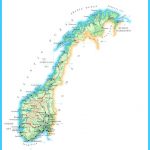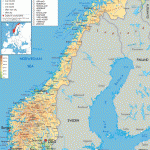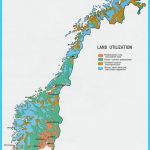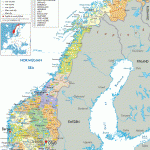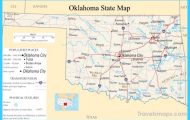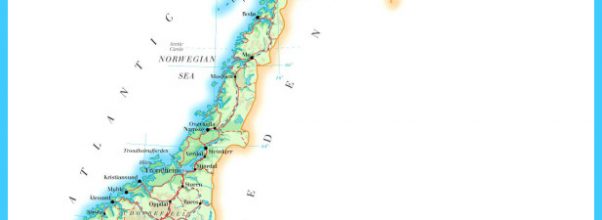
Farther north, enclosed within their skerries, are the little towns of Alesund and Kristiansund, which have continued to depend on the fisheries for their living; and the hard conditions of thefisherman’s trade are displayed most vividly in the Lofoten Islands.
In the latitude of the Lofotens begins northern Norway, with its numerous islands emerging from the sea like the peaks of a submerged mountain range and the alarmingly narrow passages between them. Ensconced in its fjord is Narvik, the ice-free port which ships the iron ore of Swedish Lapland, brought from the mines on the “ore railway” over a pass 593 m (1 945 ft) high.
In the most northerly part of Norway the fjords, flanked by the sheer rock faces which terminate the featureless mountain plateaux, are rather broader. Hammerfest, the most northerly town in Europe, is still 100 km (60 miles) short of the North Cape. One of the most interesting places in this area is Bossekop, on the Altafjord -almost the only point at which the two elements in the economy of the most northerly part of Europe, fishing and reindeer-herding, are found together.
Everywhere along the much-indented west coast of Norway rear up the Scandinavian mountains. Although there are a number of convenient routes through the mountains there are relatively few contacts between the west coast of Norway and the interior of Sweden. Northern Norway is too exclusively turned towards the sea, and the economically unproductive swath of mountain country (parts of which, to the north, are still used as grazing for the Lapps’ reindeer herds) is too broad to encourage communication between the two regions.
Map of Norway Photo Gallery
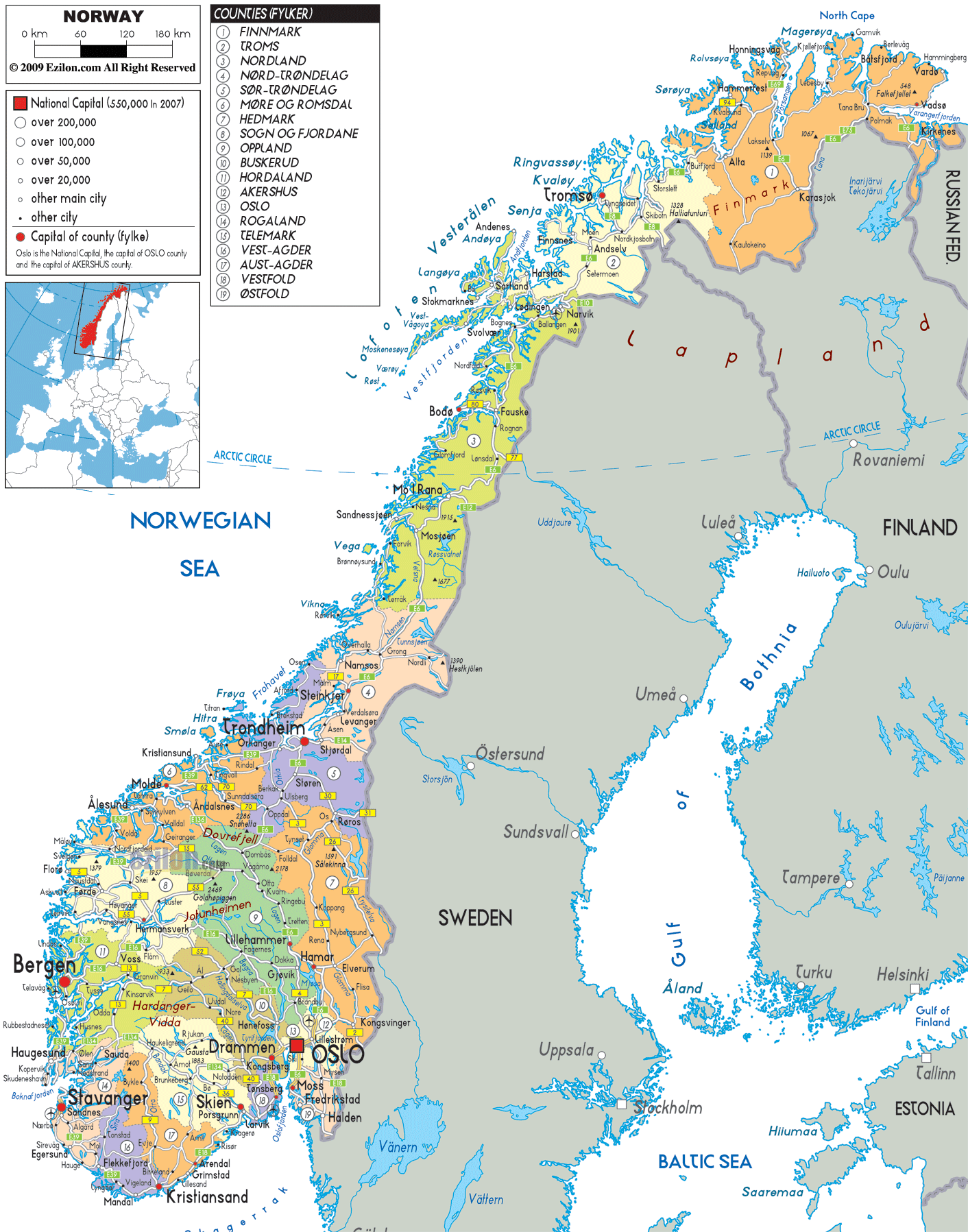
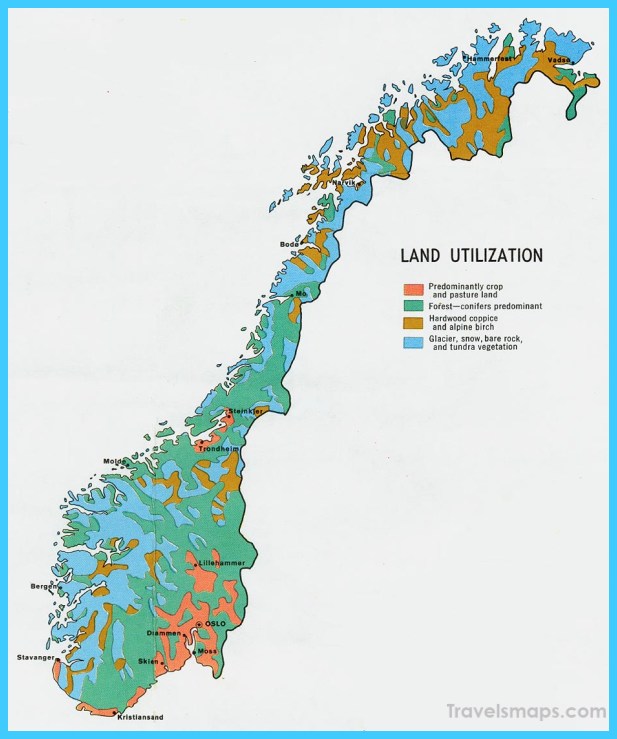
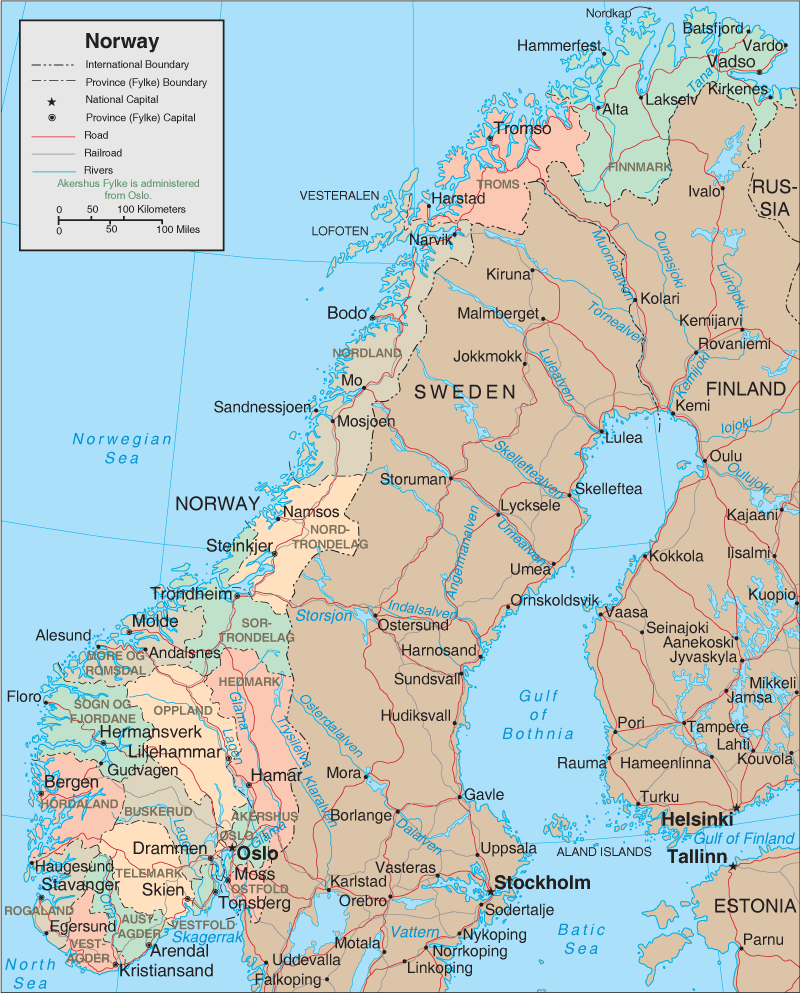
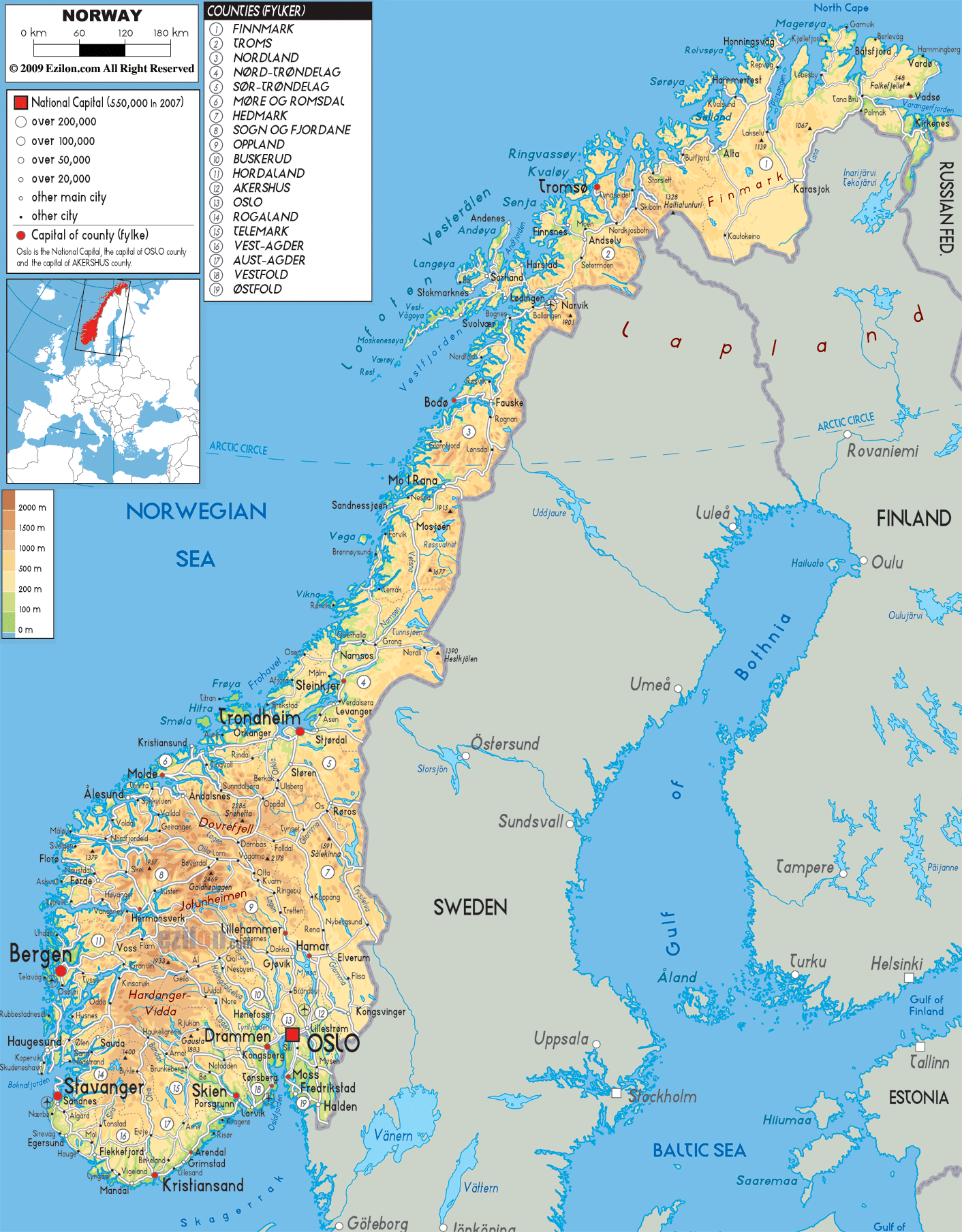
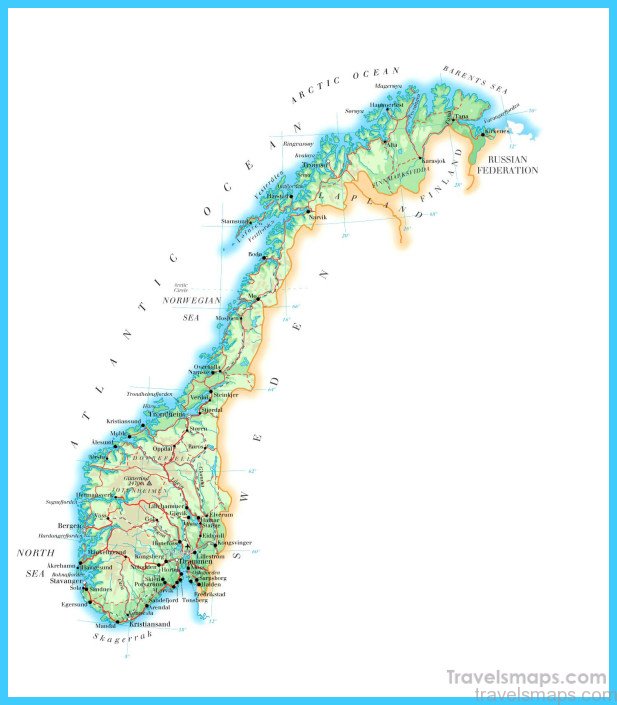
Maybe You Like Them Too
- The Most Beautiful Cities, Monuments and Attractions for Christmas
- The Best Places To Visit In North America For Christmas
- The Best Travel Destinations For Your Bucket List
- Travel to Budapest
- Top 10 Countries for Music Lovers

